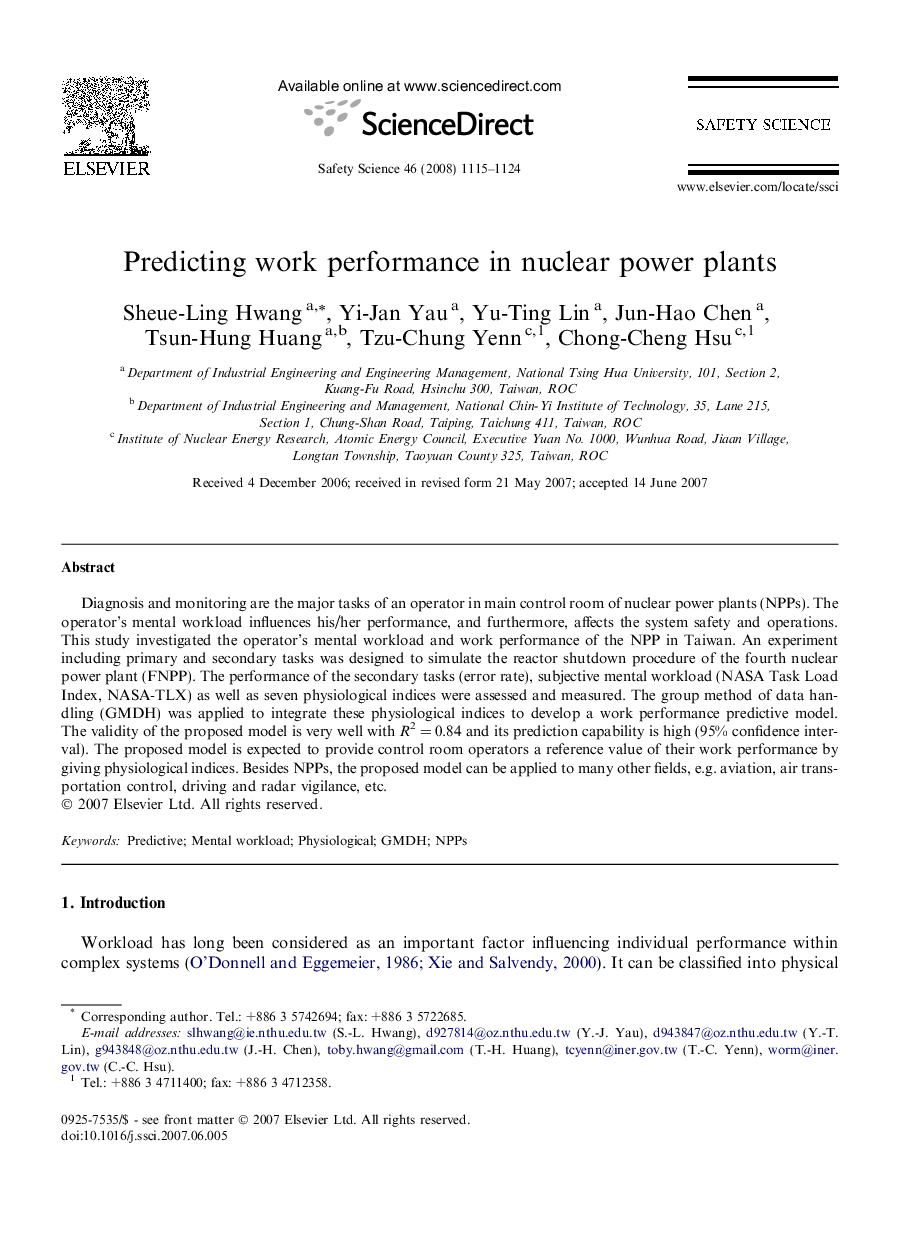| Article ID | Journal | Published Year | Pages | File Type |
|---|---|---|---|---|
| 590430 | Safety Science | 2008 | 10 Pages |
Abstract
Diagnosis and monitoring are the major tasks of an operator in main control room of nuclear power plants (NPPs). The operator's mental workload influences his/her performance, and furthermore, affects the system safety and operations. This study investigated the operator's mental workload and work performance of the NPP in Taiwan. An experiment including primary and secondary tasks was designed to simulate the reactor shutdown procedure of the fourth nuclear power plant (FNPP). The performance of the secondary tasks (error rate), subjective mental workload (NASA Task Load Index, NASA-TLX) as well as seven physiological indices were assessed and measured. The group method of data handling (GMDH) was applied to integrate these physiological indices to develop a work performance predictive model. The validity of the proposed model is very well with R2Â =Â 0.84 and its prediction capability is high (95% confidence interval). The proposed model is expected to provide control room operators a reference value of their work performance by giving physiological indices. Besides NPPs, the proposed model can be applied to many other fields, e.g. aviation, air transportation control, driving and radar vigilance, etc.
Related Topics
Physical Sciences and Engineering
Chemical Engineering
Chemical Health and Safety
Authors
Sheue-Ling Hwang, Yi-Jan Yau, Yu-Ting Lin, Jun-Hao Chen, Tsun-Hung Huang, Tzu-Chung Yenn, Chong-Cheng Hsu,
